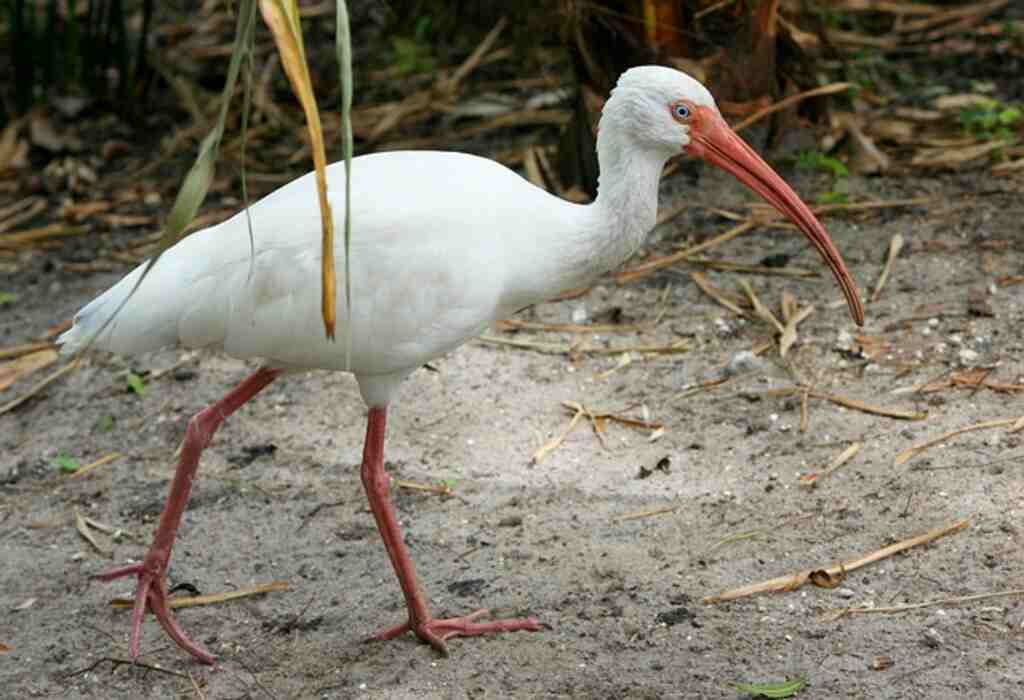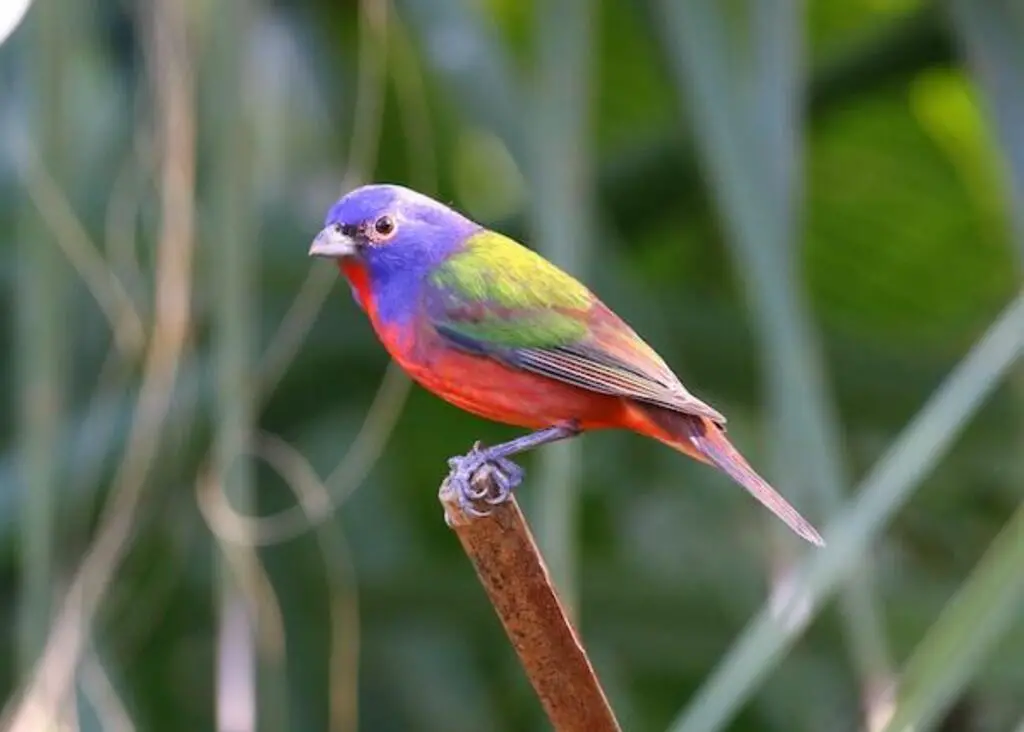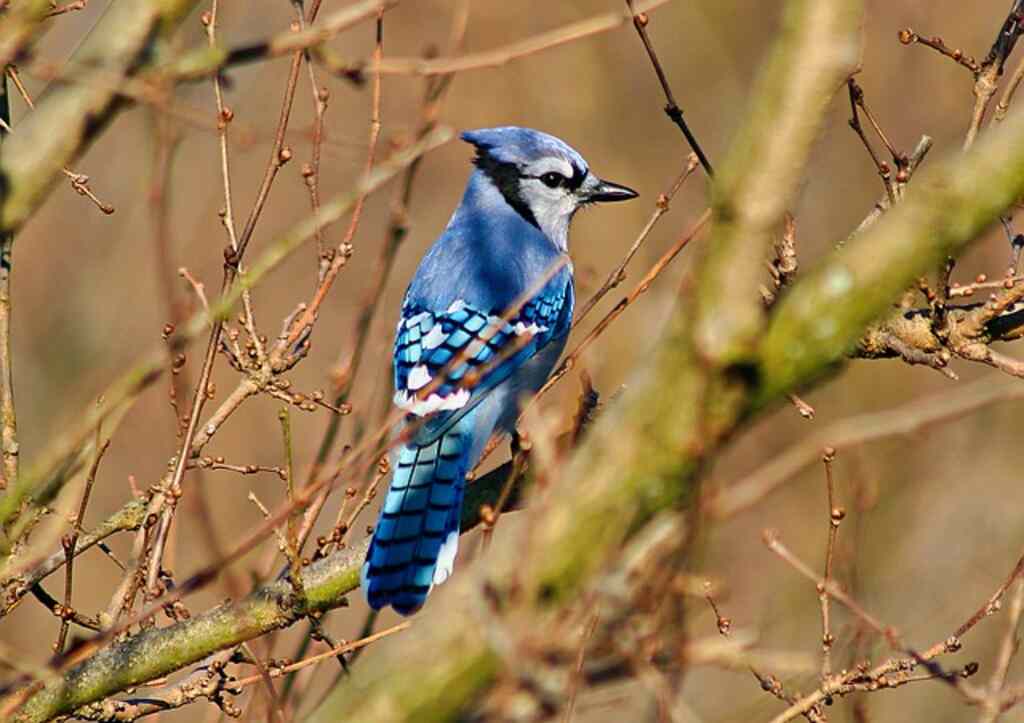North Carolina is a state steeped in natural beauty. From its gorgeous beaches to its lush forests, the state offers a diverse range of habitats that are prime locations for birdwatching. Whether you’re a seasoned birdwatcher or a beginner, North Carolina has something to offer everyone.
With over 460 bird species recorded in the state, North Carolina is a mecca for birdwatchers. The state’s diverse habitats, including coastal areas, wetlands, forests, and mountains, attract a wide range of bird species, making it one of the best places in the country for birdwatching.
Without further ado, let’s take a look at the top birdwatching hotspots in North Carolina.
Table of Contents
- 1 Key Takeaways
- 2 Top Birdwatching Hotspots In North Carolina
- 3 Explore the Natural Beauty of North Carolina
- 4 Great Smoky Mountains National Park
- 5 Outer Banks
- 6 Pisgah National Forest
- 7 Alligator River National Wildlife Refuge
- 8 Lake Mattamuskeet National Wildlife Refuge
- 9 Cape Hatteras National Seashore
- 10 Merchants Millpond State Park
- 11 Jordan Lake State Recreation Area
- 12 Conclusion
- 13 FAQ’s: Top Birdwatching Hotspots In North Carolina
- 13.1 What are the top birdwatching hotspots in North Carolina?
- 13.2 Why is North Carolina a prime location for birdwatching?
- 13.3 What bird species can be observed in Great Smoky Mountains National Park?
- 13.4 What birdwatching opportunities are available along the Outer Banks?
- 13.5 What makes Pisgah National Forest a birdwatching hotspot?
- 13.6 What can be found at the Alligator River National Wildlife Refuge for birdwatching?
- 13.7 What bird species inhabit Lake Mattamuskeet National Wildlife Refuge?
- 13.8 What makes Cape Hatteras National Seashore a popular birdwatching destination?
- 13.9 Why is Merchants Millpond State Park a birdwatching hotspot?
- 13.10 What can be observed at Jordan Lake State Recreation Area for birdwatching?
- 14 Author
Key Takeaways
- North Carolina offers some of the most diverse birdwatching habitats in the country.
- Over 460 bird species have been recorded in the state.
- The state’s natural beauty makes it a prime location for birdwatching.

Top Birdwatching Hotspots In North Carolina
North Carolina offers a wide range of birdwatching hotspots, including Cape Hatteras National Seashore, Pea Island National Wildlife Refuge, and Lake Mattamuskeet.
Explore the Natural Beauty of North Carolina
North Carolina is a prime location for birdwatching, attracting nature enthusiasts from all around the world. The state boasts a diverse range of habitats, from the coastal wetlands of the Outer Banks to the mountainous regions of the Great Smoky Mountains. With over 460 species of birds found in North Carolina, it is no wonder that birdwatching is a popular activity among locals and tourists alike.
The varied landscape of North Carolina provides a habitat for numerous bird species. The state is home to songbirds, raptors, shorebirds, waterfowl, and more. Some of the most popular birdwatching spots in North Carolina include national parks and wildlife refuges, where birders can observe a range of species in their natural habitats.
Exploring the Natural Beauty of North Carolina
The natural beauty of North Carolina is a treat for both birdwatchers and nature enthusiasts. Its diverse ecosystems, including wetlands, forests, and mountains, attract a wide variety of bird species. The Great Smoky Mountains National Park, located on the border of North Carolina and Tennessee, is home to over 240 bird species, including the endangered Kirtland’s warbler and the Appalachian bald eagle.
The Outer Banks, a string of barrier islands off the coast of North Carolina, is another popular birdwatching location. Its coastal habitats attract migratory birds such as the American oystercatcher, black skimmer, and piping plover. Birdwatchers can also observe unique bird species, such as the painted bunting and the roseate spoonbill.
Great Smoky Mountains National Park
The Great Smoky Mountains National Park is one of North Carolina’s top birdwatching destinations. Located in the western part of the state, this vast park covers over 500,000 acres of protected land and encompasses a wide range of habitats, including forests, meadows, rivers, and mountains.
The park is home to over 240 bird species, making it a prime location for birding enthusiasts. Some of the most commonly spotted birds in the park include the Black-capped Chickadee, Blackburnian Warbler, Blue-headed Vireo, and the American Goldfinch.
Best birdwatching spots within Great Smoky Mountains National Park
For the best birdwatching experience, visit Clingmans Dome, the highest point in the park, where you can observe both migratory and resident bird species. Oconaluftee and Cades Cove are also popular spots for birdwatching, with their open meadows and water sources attracting a wide variety of birdlife.
The park offers guided birdwatching tours, led by expert naturalists who can help visitors identify the different bird species in the park. These tours are a great way to learn more about the birds and their habitats, and to gain a deeper appreciation for the natural beauty of the park.
Outer Banks
The Outer Banks of North Carolina is a birdwatching paradise, boasting of diverse habitats that attract an array of migratory and resident bird species. The area is popular for birdwatching, and its beaches, dunes, wetlands, and woods offer unique opportunities to observe some spectacular bird species.
Cape Hatteras National Seashore
Cape Hatteras National Seashore is a 70-mile stretch of pristine beaches and salt marshes and is home to over 400 bird species. The park serves as a vital nesting and migratory stopover point for many shorebirds, including the threatened piping plover and the American oystercatcher. A visit to this park is always rewarding and offers opportunities to spot rare and exciting bird species.
Pea Island National Wildlife Refuge
Pea Island National Wildlife Refuge is a sanctuary for migratory and nesting birds with a mix of marsh, beach, and maritime forest habitats. The refuge hosts more than 350 bird species and is known for attracting rare and uncommon bird species such as the red knot, peregrine falcon, and black skimmer. The best times to visit are winter and spring when the refuge bustles with eagles, tundra swans, and snow geese.
The Outer Banks is a must-visit destination for birdwatchers, and visitors are encouraged to take advantage of the many opportunities to observe and enjoy birds in their natural habitats.
Pisgah National Forest
Pisgah National Forest is a birdwatching haven in North Carolina, with trails and habitats that offer a variety of bird species to observe. Located in the Appalachian Mountains, Pisgah National Forest spans over 500,000 acres and is home to a diverse range of ecosystems.
There are several birding trails within the Pisgah National Forest, with the Cradle of Forestry in America Interpretive Association providing a helpful birding guide to help visitors identify the different species in the area. Birds spotted along the trails include warblers, woodpeckers, thrushes, and raptors like the Bald Eagle and Peregrine Falcon.
One of the best trails for birdwatching is the Pink Beds Loop Trail, a 5.1-mile hike that takes visitors through mountain bogs, streams, and hardwood forests. The trail is also home to the Blackburnian Warbler, a species that is known to breed in the area.
The Blackburnian Warbler
The Blackburnian Warbler is a small bird that is known for its bright orange throat and black-and-white striped head. It is a neotropical migratory bird that breeds in the Appalachian Mountains during the summer months before migrating south to Central and South America for the colder seasons.
The warbler gets its name from Anna Blackburne, an English botanist who collected the species in the late 18th century. The Blackburnian Warbler is known for its high-pitched song that can be heard from a distance.
Overall, Pisgah National Forest is a must-visit destination for birdwatchers in North Carolina. The diverse habitats and bird species make it a perfect location for those looking to explore the state’s natural beauty.
Alligator River National Wildlife Refuge
The Alligator River National Wildlife Refuge is a prime birdwatching location in North Carolina. The refuge covers over 152,000 acres of diverse habitats, including wetlands, swamps, and pocosins. Visitors can observe a wide variety of bird species that call this refuge home, including bald eagles, swans, and red-cockaded woodpeckers.
The best time to visit the Alligator River National Wildlife Refuge for birdwatching is during the spring and fall migration seasons. During these seasons, the refuge becomes a hub of bird activity, with hundreds of thousands of birds passing through or calling it home.
One of the most popular birdwatching spots in the Alligator River National Wildlife Refuge is the Milltail Road area. This area provides excellent views of waterfowl and wading birds. Visitors can also take a guided birdwatching tour to learn more about the bird species that inhabit the refuge.
Lake Mattamuskeet National Wildlife Refuge
Lake Mattamuskeet National Wildlife Refuge is another prime birdwatching location in North Carolina.
The refuge is situated in Hyde County and is the largest natural lake in the state, covering over 40,000 acres.
The lake’s shallow waters and surrounding wetlands provide a unique habitat for a wide variety of bird species.
Commonly spotted birds in the area include tundra swans, snow geese, and various shorebirds.
Visitors can explore the refuge on foot or by car, with several designated viewing areas for birdwatching.
The best time to visit Lake Mattamuskeet National Wildlife Refuge for birdwatching is during the fall and winter months, when migratory bird species are abundant in the area.
Cape Hatteras National Seashore
Cape Hatteras National Seashore is a prime birdwatching destination in North Carolina. Covering over 70 miles of coastline, the seashore provides habitat for a wide variety of bird species.
The seashore is home to several coastal bird species, including American Oystercatchers, Black Skimmers, and Brown Pelicans. Additionally, visitors can observe migratory bird species such as Sandpipers, Plovers, and Whimbrels.
The Cape Hatteras National Seashore offers birdwatching opportunities for both novice and experienced birders. Visitors can explore the seashore’s various trails and beaches, or take a guided birdwatching tour to learn more about the unique bird species found in this area.
“The Cape Hatteras National Seashore offers birdwatching opportunities for both novice and experienced birders.”
If you’re planning a birdwatching trip to North Carolina, be sure to include Cape Hatteras National Seashore on your itinerary for a chance to observe some of the state’s most unique coastal bird species.
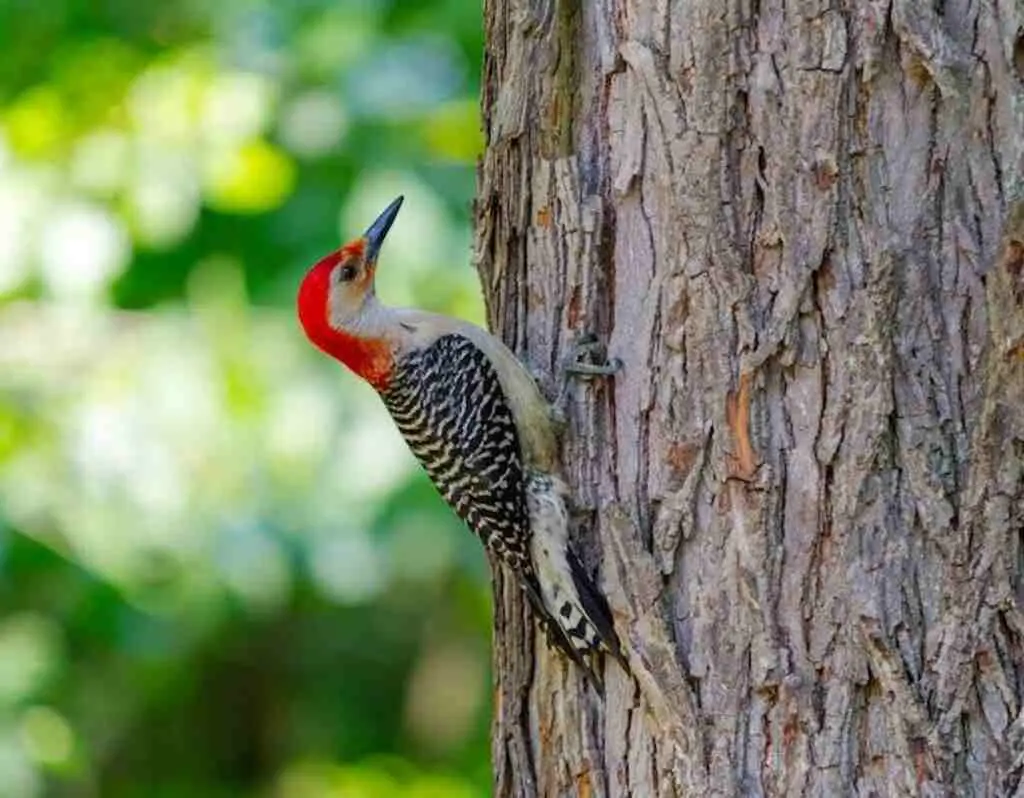
Merchants Millpond State Park
Merchants Millpond State Park is located in northeastern North Carolina and is known for its beautiful cypress-tupelo swamp. Birdwatchers flock to this serene environment to observe the diverse birdlife that inhabits the park.
The park’s bird species range from waterfowl to songbirds, making it an ideal location for birdwatchers of all interests. Visitors can spot wood ducks, great blue herons, and green herons along the waterways, while prothonotary warblers and red-shouldered hawks can be found in the surrounding forests.
Merchants Millpond State Park offers numerous trails for birdwatchers to explore and get up close and personal with the park’s wildlife. The Lassiter Trail and Boardwalk is a popular option that winds through the cypress swamp, while the Bennetts Creek Trail provides a view of the park’s upland forest.
This state park also offers opportunities for non-birdwatchers to enjoy nature. Visitors can rent canoes or kayaks to paddle around the millpond and take in the park’s beauty from a different perspective. The park also has picnic areas and a campground for overnight stays.
Jordan Lake State Recreation Area
Jordan Lake State Recreation Area is a popular destination for birdwatchers in North Carolina. With over 300 bird species, visitors can expect to observe a wide variety of birds in the area. The park is located in Chatham County, and it covers over 46,000 acres, including a 14,000-acre lake.
The park has several habitats that provide ideal birdwatching opportunities, such as the mixed pine and hardwood forests, the wetlands, and the shoreline. Visitors can also take advantage of the numerous trails that run through the park.
Some of the bird species that can be spotted in Jordan Lake State Recreation Area include bald eagles, ospreys, great blue herons, and wood ducks. Visitors can also catch sight of migratory species such as sandhill cranes, Canada geese, and various species of waterfowl.
The best time to visit Jordan Lake State Recreation Area for birdwatching is during the fall and spring migration seasons. Visitors can take part in the annual hawk watch at the park to observe the migration of various hawk species.
If you’re looking for a diverse range of bird species and habitats, Jordan Lake State Recreation Area should be on your list of North Carolina birdwatching hotspots.
Conclusion
North Carolina is a beautiful state that is home to a wide range of bird species, making it a prime location for birdwatching enthusiasts. From the Great Smoky Mountains National Park to the Outer Banks, there are numerous birdwatching hotspots to explore.
It is important to preserve these locations and appreciate the natural beauty that surrounds us. Through birdwatching, we can gain a greater appreciation for the environment and the wildlife that inhabit it.
We encourage you to explore the top birdwatching hotspots in North Carolina and discover the diverse bird species that call the state home. Whether you’re an experienced birdwatcher or a beginner, there is always something new to discover in North Carolina.
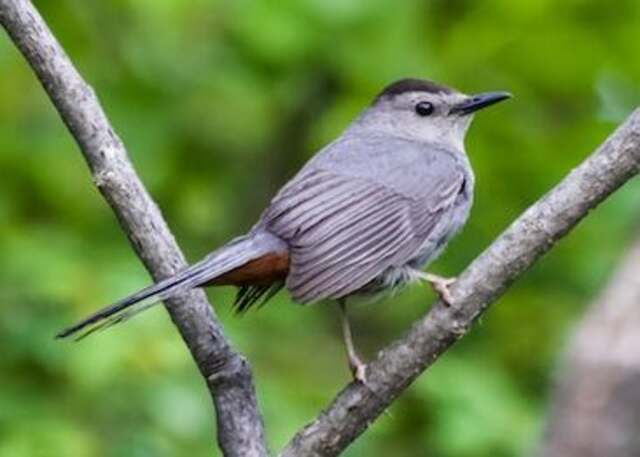
FAQ’s: Top Birdwatching Hotspots In North Carolina
What are the top birdwatching hotspots in North Carolina?
The top birdwatching hotspots in North Carolina include Great Smoky Mountains National Park, Outer Banks, Pisgah National Forest, Alligator River National Wildlife Refuge, Lake Mattamuskeet National Wildlife Refuge, Cape Hatteras National Seashore, Merchants Millpond State Park, and Jordan Lake State Recreation Area.
Why is North Carolina a prime location for birdwatching?
North Carolina’s natural beauty and diverse habitats make it an ideal location for birdwatching. The state boasts a wide variety of bird species due to its diverse ecosystems, including coastal areas, forests, and wetlands.
What bird species can be observed in Great Smoky Mountains National Park?
Great Smoky Mountains National Park is home to a rich biodiversity of bird species. Visitors can observe a variety of birds, including warblers, woodpeckers, owls, and more.
What birdwatching opportunities are available along the Outer Banks?
The coastal habitats of the Outer Banks attract migratory birds, providing excellent birdwatching opportunities. Visitors can spot unique bird species such as shorebirds, waterfowl, and birds of prey.
What makes Pisgah National Forest a birdwatching hotspot?
Pisgah National Forest offers various trails and habitats that attract a wide range of bird species. Birdwatchers can enjoy observing birds such as the Northern cardinal, tanagers, vireos, warblers, and many others in this forest.
What can be found at the Alligator River National Wildlife Refuge for birdwatching?
The Alligator River National Wildlife Refuge is a significant location for birdwatching in North Carolina. Visitors can find a diverse range of bird species, including waterfowl, shorebirds, eagles, and more. The best times to visit are during the spring and fall migrations.
What bird species inhabit Lake Mattamuskeet National Wildlife Refuge?
Lake Mattamuskeet National Wildlife Refuge is home to a diverse array of bird species. Visitors can spot waterfowl, wading birds, raptors, and other wetland birds in and around the lake.
What makes Cape Hatteras National Seashore a popular birdwatching destination?
Cape Hatteras National Seashore is known for its unique coastal bird species. Birdwatchers can observe shorebirds, gulls, terns, and other seabirds in this area.
Why is Merchants Millpond State Park a birdwatching hotspot?
Merchants Millpond State Park boasts a diverse range of birdlife. The tranquility of the park’s environment and its diverse habitats make it an excellent location for birdwatching in North Carolina.
What can be observed at Jordan Lake State Recreation Area for birdwatching?
Jordan Lake State Recreation Area offers a variety of habitats for birdwatching. Visitors can observe a range of bird species, including waterfowl, raptors, songbirds, and more.

